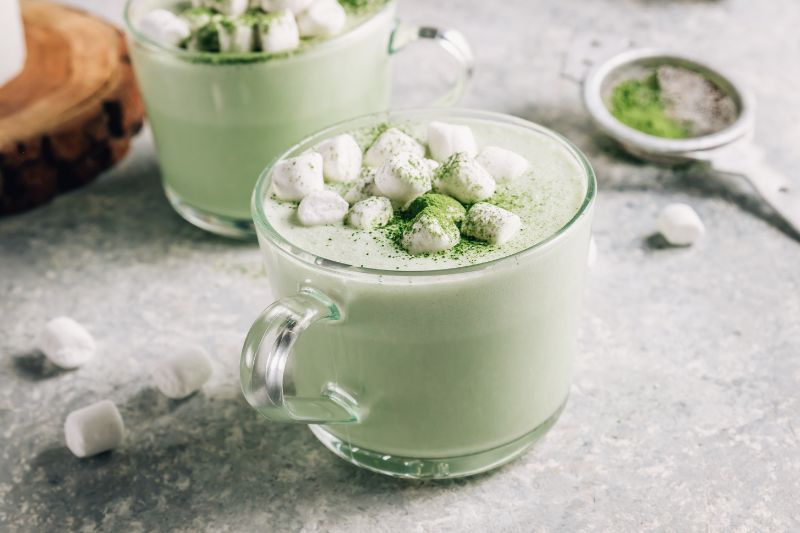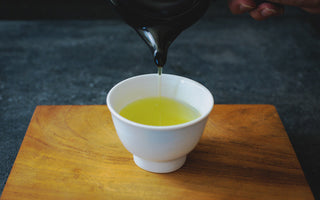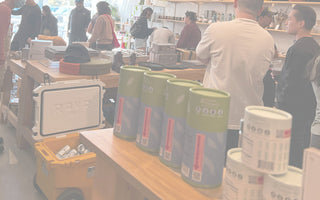How to Use Ginger with Japanese Green Tea
It is tough to argue that at least a small part of our enjoyment of tea is a cultural adventure of sorts. Perhaps the Earl Greys of the world touch on your knowledge of British history. Perhaps your favorite oolong tea brings back memories of your trip to Fujian, China. Lastly, it may be that the Japanese green tea you are currently enjoying piques your interest in how sencha became so popular.

Whatever it is and whether you recognize it, a cultural stamp is pressed on the world of tea. This article will review the cultural stamp on Japanese green tea specifically. We will spend some time understanding ginger, its history, its application(s), and the how-tos of Japanese green tea with this unique ingredient.
What Do You Know About Ginger? (Perhaps a History)
Yes, ginger is that distinct, earthy-like plant that may best be explained by its strong, almost bitter-like flavor. Beyond this, what else is there to know about ginger? Likely native to southern or southeastern Asia, ginger has been a major ingredient in Indian and Chinese cuisines since at least ancient times. In China, we have the writings of Shennong, also known as the father of traditional Chinese medicine. Apparently, ginger was noted for its healing abilities and for maintaining well-being. In fact, Confucius is said to have had ginger before every meal, which he claimed removed dampness in his stomach and aided indigestion. By the 1st century AD, ginger had made its way into Japan, Korea, and as far away as the Mediterranean. By the 16th century, ginger had become a global commodity via the Spanish Empire. Its original application was primarily related to aiding digestion. The ancient Greeks wrapped ginger in their bread and ate it after dinner. This, apparently, led to the invention of gingerbread. The English would eventually create ginger beer to aid digestion. Often, you will find ginger dried and ground as a flavoring and spice. The green ginger seen on the roots, or rhizomes, is often used in cooking, while slices of ginger are commonly found in Japanese dishes, particularly sushi.
Ginger use extends well beyond what you may commonly find in grocery stores or in recipes. Ginger is used in teas and broths and can even be found in capsules. Slowly sipped ginger tea can be great for coughs, nausea, stomach aches, and even arthritis.

Are any of these claims related to the purported health benefits actually true? Let us review a few case studies. In 2010, a relatively small study looked at the effects of ginger root powder supplements on nausea in kids and younger adults who were taking chemotherapy. In the experimental group, nausea was reduced. In 1999, a study was conducted on 12 volunteers taking 100 mg twice a day of the ginger extract while fasting and then taking a meal. In both cases, ginger purportedly leads to increased digestive movement.
However, the benefits of ginger extend beyond nausea and the digestive system. Ginger reportedly lowers cholesterol levels by blocking cholesterol absorption. It may also help ease the flu or a cold. Other studies have suggested that it may also relieve pain and even reduce inflammation. As a major source of antioxidants, ginger can reduce all kinds of "oxidative stress." The idea is the removal of free radicals or elements that cause cell damage and can lead to all kinds of health issues, including cancer. Specifically, a 2013 study showed ginger may play a role in preventing colorectal cancer.
Ginger in Japan (How Its Commonly Used, Etc.)
Yes, ginger is quite common in Japan, and chances are you have come across it at your favorite sushi restaurant. However, there is a much larger story to tell. As noted, ginger arrived in Japan approximately 2000 years ago. Chinese traditional medicine and Buddhism flourished as if they were two sides of the same coin. Ginger became a part of this new narrative in Japan. In fact, in September, in parts of Japan, you may be lucky enough to partake in Shoga Matsuri, also referred to as the Ginger Root Festivals. There are a few of these festivals held across parts of Japan, but on September 9th specifically, the city of Akiruno reflects on the importance of ginger and its role in religion, health, and wellbeing. The historical narrative of this festival goes something like this: It was believed that if you were to eat the Ninomiya Shrine’s ginger, evil would be warded off and you would be in a perfect state of health.
In contemporary times, ginger is commonly used across Japan in many different applications. Shogayu, or ginger hot water, being a ginger tea, is often used as a remedy for common colds. Hiyashiame is a summer drink to help the drinker deal with hotter weather. Gari is a type of tsukemono, or pickled vegetable, that is sliced and commonly used with sushi. It is as much about cleansing the palate as it is about adding to the presentation of the meal. Ginger is said to also help kill any additional pathogens that may be in the raw fish. With genmaicha at their side, sushi and ginger have helped establish a cultural icon for the world of Japanese cuisine.
Ginger and my Tea
Can I simply add ginger to my tea? The simple answer is yes, you can! It can be hard to know what to do with ginger when you are picking it up for the first time. It is not immediately obvious what one should do to extract the flavors he or she desires. There are also different drink types. These include lattes, simple teas, iced and flavored teas, and even smoothies!
A common recipe is green tea with ginger and lemon. Here is what you’ll need:
- 4 or 5 cups of water
- 2.5-inch piece of ginger coarsely chopped or 1 tablespoon (depending on your preference)
- 3 servings of loose green tea or 2-3 green tea bags
- ½ lemons (or more) squeezed

Put two cups of water and your ginger into a saucepan, and make sure to bring it to a boil. Let it simmer for 5 minutes, stir in your honey, and then remove the pan from the heat and add the loose tea or tea bags. Steep for 3 more minutes, and then strain everything out. Combine the strained tea and 2 cups of water into a larger pitcher, and then add lemon juice.
As you can imagine, lattes with ginger and matcha are not overly complicated. For a single average cup, you’ll need:
- ½ teaspoon of matcha
- ¾ near-boiling water
- Ginger and honey
- ¼ of sweetener such as coconut milk

Whisk your matcha with ¼ cup of water until smooth. (Feel free to review our matcha kit here or something like that.) Once smooth, add your honey, coconut milk, or other sweeteners to taste. Pour in the remaining water and whisk or use a milk frother until you are satisfied with the drink’s consistency and smoothness.
For your favorite morning smoothie, you will need a few more ingredients:
- 2 peeled and quartered oranges
- a large handful of baby spinach
- 1-inch knob of peeled and sliced ginger
- 2/3 cups of coconut water
- 1 tablespoon of chia seeds
- 2 teaspoons of matcha
- 1 cup of ice
Next step: blend and puree the ingredients, and lastly, enjoy!

Are You Ready For Something Different?
Ginger not only has a distinct history in shaping cultural cuisines, but it also remains an icon of health in the world of digestion and tea. Sometimes it is difficult to step beyond the boundaries of what we are comfortable with, and this includes tea as well, but thankfully, ginger is not as big of a leap as it may sound to some. It’s a relatively small step into some that pair incredibly well with other teas.
Ultimately, it is up to you; however, history shows that it's tough to go wrong with some added ginger. Enjoy a latte or try a smoothie, and continue exploring what tea offers!
Get Free Bonus Books

Sign up for free to the Green Tea Club to get advice and exclusive articles about how to choose Japanese Tea, and tips, tricks, and recipes for enjoying Japanese tea.
About the author
Kei Nishida
Author, CEO Dream of Japan
Certification: PMP, BS in Computer Science
Education: Western Washington University
Kei Nishida is a passionate Japanese green tea connoisseur, writer, and the founder and CEO of Japanese Green Tea Co., a Dream of Japan Company.
Driven by a deep desire to share the rich flavors of his homeland, he established the only company that sources premium tea grown in nutrient-rich sugarcane soil—earning multiple Global Tea Champion awards.
Expanding his mission of introducing Japan’s finest to the world, Kei pioneered the launch of the first-ever Sumiyaki charcoal-roasted coffee through Japanese Coffee Co. He also brought the artistry of traditional Japanese craftsmanship to the global market by making katana-style handmade knives—crafted by a renowned katana maker—available outside Japan for the first time through Japanese Knife Co.
Kei’s journey continues as he uncovers and shares Japan’s hidden treasures with the world.
Learn more about Kei






